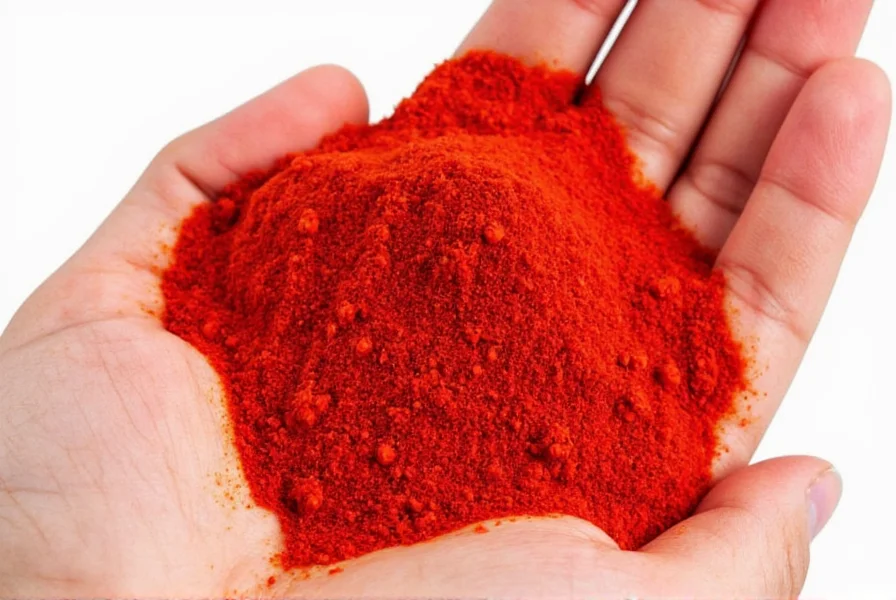For centuries, cayenne pepper has been valued in traditional medicine systems worldwide. Modern research now provides evidence for several of its health benefits, though important limitations exist. This comprehensive review examines what science actually says about cayenne pepper's effects on human health, separating established facts from popular claims.
Understanding Cayenne Pepper and Its Active Compound
Cayenne pepper (Capsicum annuum) gets its distinctive heat from capsaicin, a bioactive compound concentrated in the pepper's placental tissue. When consumed or applied topically, capsaicin interacts with transient receptor potential vanilloid 1 (TRPV1) receptors throughout the body. This interaction initially causes the familiar burning sensation but subsequently desensitizes these receptors, creating several physiological effects researchers have documented.

Scientifically Supported Health Benefits of Cayenne Pepper
Multiple peer-reviewed studies have investigated cayenne pepper's effects. The most compelling evidence exists for specific applications, while other potential benefits require further research.
Pain Management Through Topical Application
Topical capsaicin creams (containing 0.025%-0.075% capsaicin) have received FDA approval for managing certain pain conditions. Research published in Current Pharmaceutical Design demonstrates that regular application depletes substance P in nerve endings, reducing pain signals. Clinical trials show effectiveness for:
- Osteoarthritis and rheumatoid arthritis pain
- Neuropathic pain from shingles (postherpetic neuralgia)
- Diabetic neuropathy symptoms
- Musculoskeletal pain
Metabolic Effects and Weight Management Support
Studies indicate capsaicin may modestly increase energy expenditure and fat oxidation. A meta-analysis in Appetite found that capsaicin consumption increased energy expenditure by approximately 50 calories daily and reduced appetite slightly. While not a weight loss solution, these effects may complement comprehensive weight management strategies when combined with proper diet and exercise.
Cardiovascular Health Considerations
Research suggests cayenne pepper may support heart health through multiple mechanisms. A study in Cell Metabolism found capsaicin activated receptors that improved blood vessel function in animal models. Human observational studies show populations with regular chili pepper consumption had lower rates of cardiovascular mortality, though causation hasn't been established. Potential mechanisms include:
- Moderate blood pressure regulation
- Improved blood lipid profiles
- Antiplatelet effects reducing excessive clotting
| Benefit Area | Research Support Level | Key Findings | Recommended Application |
|---|---|---|---|
| Pain Relief | Strong (FDA-approved) | Reduces neuropathic and arthritic pain by 30-50% in clinical trials | 0.025-0.075% topical cream applied 3-4 times daily |
| Metabolic Boost | Moderate | Increases energy expenditure by ~50 calories/day; modest appetite reduction | 30-130mg capsaicin before meals |
| Cardiovascular Support | Preliminary | Observational links to reduced heart disease mortality; improved vascular function in animal studies | Regular dietary inclusion (1/4-1/2 tsp daily) |
| Digestive Health | Limited | Potential reduction in stomach ulcers; increased digestive enzyme production | Small amounts with meals for tolerant individuals |
Digestive System Effects
Contrary to popular belief that spicy foods harm digestion, research in Alimentary Pharmacology & Therapeutics suggests capsaicin may protect against stomach ulcers by stimulating mucus production and improving blood flow to the stomach lining. However, individuals with existing gastrointestinal conditions like GERD or IBS may experience symptom exacerbation. The effects appear dose-dependent, with moderate consumption potentially beneficial while excessive amounts may cause discomfort.
Important Considerations and Limitations
Understanding the boundaries of cayenne pepper's benefits is crucial for safe and realistic expectations.
Research Limitations to Recognize
Most human studies on cayenne pepper use concentrated capsaicin extracts rather than culinary amounts. Many promising findings come from animal studies or small human trials that require larger-scale verification. The Journal of Nutritional Science notes that while mechanisms appear plausible, more rigorous human clinical trials are needed to confirm many potential benefits.
Potential Side Effects and Contraindications
Cayenne pepper is generally safe when consumed in food amounts, but higher doses may cause:
- Temporary burning sensation in mouth, throat, or digestive tract
- Skin irritation with topical application (always do a patch test)
- Worsening of acid reflux or heartburn symptoms
- Interaction with blood thinners like warfarin
Individuals with gastrointestinal ulcers, inflammatory bowel disease, or on certain medications should consult healthcare providers before using cayenne therapeutically.

Practical Usage Guidelines
For those interested in incorporating cayenne pepper for potential health benefits:
- Start with small culinary amounts (1/8-1/4 teaspoon daily) to assess tolerance
- Gradually increase to maximum 1/2 teaspoon daily if well-tolerated
- For topical pain relief, use FDA-approved capsaicin creams following package instructions
- Consider standardized capsaicin supplements only under healthcare provider guidance
- Never apply undiluted cayenne directly to skin
Conclusion: Realistic Expectations for Cayenne Pepper Benefits
Cayenne pepper offers several evidence-supported health benefits, particularly for pain management through topical application. Its metabolic and cardiovascular effects show promise but appear modest in real-world application. As with any natural remedy, cayenne pepper works best as part of a comprehensive health approach rather than a standalone solution. Current research supports its inclusion in a balanced diet for most people, with attention to individual tolerance and medical conditions. Future studies may clarify optimal dosing and applications for specific health concerns.
Frequently Asked Questions
How much cayenne pepper should I consume daily for health benefits?
For culinary use, 1/8 to 1/2 teaspoon daily is generally safe for most adults. Research on metabolic effects typically uses 30-130mg of capsaicin (equivalent to about 1/4 teaspoon of cayenne pepper). Always start with small amounts to assess tolerance, and consult your healthcare provider if considering therapeutic doses, especially if you have gastrointestinal conditions or take medications.
Can cayenne pepper help with arthritis pain?
Yes, topical capsaicin creams (0.025%-0.075%) are FDA-approved for arthritis pain relief. Multiple studies show these formulations can reduce osteoarthritis and rheumatoid arthritis pain by 30-50% with regular use. The mechanism involves depleting substance P in nerve endings. It typically takes 2-4 weeks of consistent application to notice significant improvement, and some users experience initial burning that diminishes with continued use.
Does cayenne pepper actually boost metabolism?
Research indicates capsaicin may modestly increase energy expenditure by approximately 50 calories per day and slightly reduce appetite. A meta-analysis in Appetite found these effects are generally temporary and diminish as the body adapts. While not a significant weight loss solution on its own, these metabolic effects may complement comprehensive weight management strategies when combined with proper diet and exercise.
Are there any risks associated with regular cayenne pepper consumption?
When consumed in normal food amounts, cayenne pepper is safe for most people. However, excessive consumption may cause gastrointestinal discomfort, worsen acid reflux, or interact with blood-thinning medications. Topical application can cause skin irritation, especially in sensitive individuals. People with gastrointestinal ulcers, inflammatory bowel disease, or certain other medical conditions should consult healthcare providers before using cayenne therapeutically.
How long does it take to experience benefits from cayenne pepper?
Benefits vary by application. For topical pain relief, it typically takes 2-4 weeks of consistent application to notice significant improvement. Metabolic effects may be noticeable within hours of consumption but are generally modest. Cardiovascular and digestive benefits develop gradually with regular consumption over weeks to months. Individual responses vary significantly based on genetics, health status, and dosage.











 浙公网安备
33010002000092号
浙公网安备
33010002000092号 浙B2-20120091-4
浙B2-20120091-4